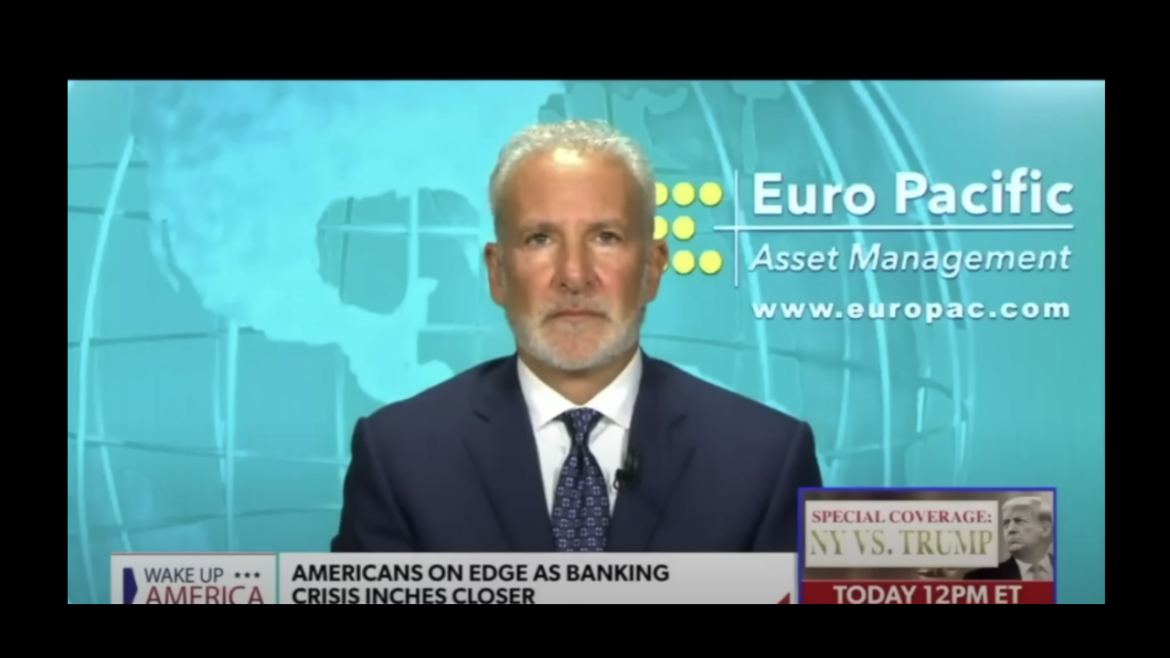Gold has all the potential to go unprecedentedly high. But silver will be gold on
Site:
Precious metals news
\The Federal Reserve can look past low liquidity in the Treasuries market and continue with its rate hikes, according to strategists at JPMorgan Chase & Co.
Wall Street CEOs and U.S. officials discussing an intervention at First Republic Bank are exploring the possibility of government backing to encourage a deal, Bloomberg News reported on Tuesday, citing people with knowledge of the situation.
U.S. authorities are set to explore ways to bolster financial stability, along with steps to tackle the problems facing First Republic Bank, as central banks consider whether recent banking sector turmoil has reduced the need for interest rate rises.
The Federal Reserve is grappling with a hazier economic picture clouded by turmoil in the banking industry and still-high inflation just as it meets to decide whether to keep raising interest rates or declare a pause.
the "most important FOMC meeting of the year", one which has been dubbed "Powell's Volcker Moment" and whose decision will test the Fed chair unlike any other because while on one hand, inflation is still rising, on the other the regional banking sector is currently undergoing existential shock with several banks failing in shocking and rapid succession as a result of the Fed's aggressive rate hikes (which in turn a result of the Fed's aggressive easing and non-hikes in 2021) leaving Powell trapped.
The Fed concludes its two-day meeting on Wednesday and investors expect the central bank to approve a quarter-point interest rate hike. Follow here for live updates.
World stocks were cautiously higher on Wednesday as hopes that a banking crisis would be averted were tempered by uncertainty before a Federal Reserve meeting that sees the central bank caught between taming inflation and maintaining stability. While London's FTSE stock index dipped, European stock markets more broadly edged higher while Asia-Pacific shares outside...
The Federal Reserve is trying to walk a tightrope — in a hurricane.After rate hikes resulted in the collapse of Silicon Valley Bank and Signature Bank, the Federal Reserve and the US Treasury stepped in with a bailout. With that hole in the dam seemingly plugged for the time being, the Fed pushed forward and raised interest rates by another 25 basis points at its March meeting.
In the wake of two major bank failures, Federal Deposit Insurance Corporation (FDIC) deposit insurance effectively went to infinity. And there is no reason to believe it will be temporary.As Silicon Valley Bank and Signature Bank were toppling, the government rushed in to guarantee 100 percent of both banks' deposits. It was touted as an emergency measure to maintain confidence in the banking system and prevent runs at other banks. In effect, it bailed out wealthy depositors at two failing banks.
The dust continues to settle after the failure of Silicon Valley Bank and Signature Bank, and the ensuing government bailout. Many people in the mainstream seem to think the crisis has passed. But a closer look at the condition of the banking system reveals these two banks were just the tip of the iceberg. Peter Schiff appeared on NewsMax Wake Up America to talk about the financial crisis. He said that there are more bailouts to come.
Mar 21, 2023 - 12:53:59 PDT
Steve Forbes calls out the taboo of discussing the gold standard in serious conversations about the economy, and points out that were the US still using it, many economic crises would not have occurred.
Gold has embarked on a steady up move. Economists at Societe Generale expect the yellow metal to enjoy further gains toward the $2,055/75 region.
 Is Silver the Next Gamestop? How Retail Investors Challenged Wall Street Giants Again
Is Silver the Next Gamestop? How Retail Investors Challenged Wall Street Giants AgainMar 21, 2023 - 12:50:28 PDT
In the wake of unprecedented short squeezes involving stocks like GameStop and AMC in early 2021, a group of retail investors from the Reddit forum r/WallStreetBets (and the spinoff called r/WallStreetSilver) set their sights on the silver market, attempting to challenge Wall Street giants with a so-called "silver short squeeze." The silver short squeeze movement was sparked on the...
 JPMorgan Is the Unlucky Owner of the Fake Nickel Uncovered by the Lme—Really Just Bags of Rocks
JPMorgan Is the Unlucky Owner of the Fake Nickel Uncovered by the Lme—Really Just Bags of RocksMar 21, 2023 - 12:48:45 PDT
It's the second scandal involving fake nickel in as many months.
The first is that this crisis isn’t going away anytime soon - it may shape-shift, but it’s not going away. The second is that the outcome of this crisis is going to be unlike anything that’s ever occurred in history.
The next logical step is for the government to insure all bank deposits, which is tantamount to nationalizing the entire banking system. But to what end?
 The Banking Crisis Is Young Yet – Brace for a Long Hot Summer of Financial Accidents
The Banking Crisis Is Young Yet – Brace for a Long Hot Summer of Financial AccidentsMar 21, 2023 - 12:00:28 PDT
Swiss regulators have tossed nitroglycerin onto the global financial fire. They have also committed shameless expropriation. So much for the safety of Zurich.
The billionaire urges the federal government to guarantee all deposits in order to stop bank runs.
The Federal Reserve shouldn’t raise its benchmark rate this week, Pershing Square’s Bill Ackman said, arguing that the banking crisis has already had the effect of a “meaningful tightening of financial conditions.”
Banks’ riskiest bonds advanced globally on Tuesday after panic subsided, and investors heeded regulators’ assurances that the wipeout in Credit Suisse Group AG’s Additional Tier 1 notes wouldn’t happen in their jurisdictions under similar circumstances.










